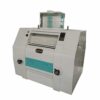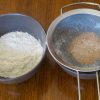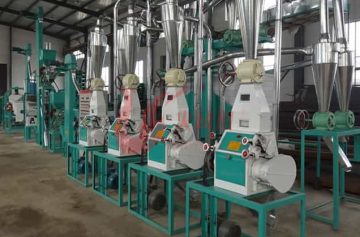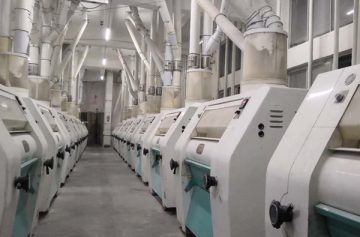When it comes to the wheat flour milling machine, everyone is very concerned about the price of the wheat production line. Before understanding your wheat flour mill line, you must have your own site, followed by the machine. Choose the right machine according to your own site, but after knowing the price, Everyone should be clear about the workflow of the wheat flour mill, so that the follow-up work will be very convenient.
Next, the staff of Hanzhong Burt will introduce the workflow of the wheat flour milling machine to you.

Wheat–cleaning–watering–moisturizing wheat–grinding–grinding and sieving–powdering–the packaging
- Cleaning: It is mainly to clean the straw, stones, damaged wheat, and other impurities in the wheat that affect the flour yield. The main equipment is a wheat threshing machine, stone removal machine, wind selection, selection, etc. According to the quality of wheat and milling requirements, various flour mills will have some differences
- Watering: After the wheat is cleaned, it needs to be watered, so that the moisture of the wheat reaches a certain content, which can improve the toughness of the wheat husk and reduce the mechanical strength of the wheat endosperm so that the wheat husk should not be ground very much during grinding. flour quality, and the conditioned endosperm results in lower roller wear and lower energy consumption in the mill. Generally, high-gluten wheat needs more water, and low-gluten wheat is relatively less.
- Run wheat: Wheat soaked in water should be stored in the wheat warehouse for a certain period of time, generally 8 to 24 hours, depending on the variety of wheat and the temperature. High-gluten wheat generally takes longer, and it takes longer to moisten wheat in winter. The wheat after watering and moistening is called the milled wheat, and the moisture of the milled wheat is controlled at 14-16%. If it is too high, it will affect the subsequent screening.
- Grinding and sieving: Distracted grinding system and skin grinding system, the mill crushes the wheat into large bran, small bran, large endosperm, small endosperm, coarse powder, and fine powder, and then different materials enter different mills. Grinding with a powder machine, sieving, and cleaning at the same time. This is a very complicated process that needs to be adjusted by experienced fans to achieve the best results. Finally get flour (1~3 kinds), coarse bran, and fine bran.
- Mixing flour: Due to the demand for special flour, one kind of wheat flour often fails to meet the customer’s requirements. By mixing different wheat flours in a certain proportion, various silty properties of the finished flour can be adjusted to meet the customer’s requirements.
- Lastly is the packaging.
The configuration, production capacity, and process of the equipment are different, and the prices are often different, so they cannot be said in one word.
The advantages of this flour mill machinery design are a principle, the operation is simple, maintenance is easy, and covers little area. Using dry peeling and degerming technology, it can produce different sizes of grits and flour at the same time. it can be customized as per customer’s needs such as brewery, snack food, glucose, or sugarhouse.




